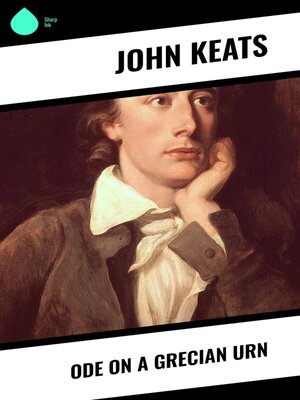
Sign up to save your library
With an OverDrive account, you can save your favorite libraries for at-a-glance information about availability. Find out more about OverDrive accounts.
Find this title in Libby, the library reading app by OverDrive.



Search for a digital library with this title
Title found at these libraries:
| Library Name | Distance |
|---|---|
| Loading... |
John Keats's "Ode on a Grecian Urn" is a masterful exploration of the interplay between art, beauty, and mortality. Written in 1819, this poem exemplifies the Romantic era's preoccupation with the sublime and the transient nature of human experience. Keats employs rich imagery and intricate symbolism, guiding readers through a visual narrative of the urn's depicted scenes of timelessness. The poem's innovative structure combines lyrical beauty with philosophical inquiry, challenging the reader to contemplate the relationship between the eternal and the ephemeral, ultimately concluding with the famous line, "Beauty is truth, truth beauty." Keats, a central figure of the Romantic movement, was deeply influenced by classical art and philosophy, which is evident in his fascination with Greco-Roman culture. His own struggle with illness and the loss of loved ones imbued his work with a profound sense of longing and an appreciation for the fleeting nature of life. "Ode on a Grecian Urn" reflects his quest for permanence through art—a response to his mortality and a celebration of the beauty that language can encapsulate. This ode deserves a place in every reader's collection. Its lyrical richness and philosophical depth invite repeated readings and contemplation, offering significant insight into not only Keats's own artistic vision but also the broader Romantic ideals. Engaging with this work promises to enrich one's understanding of art's power to inspire timeless dialogue between past and present.







